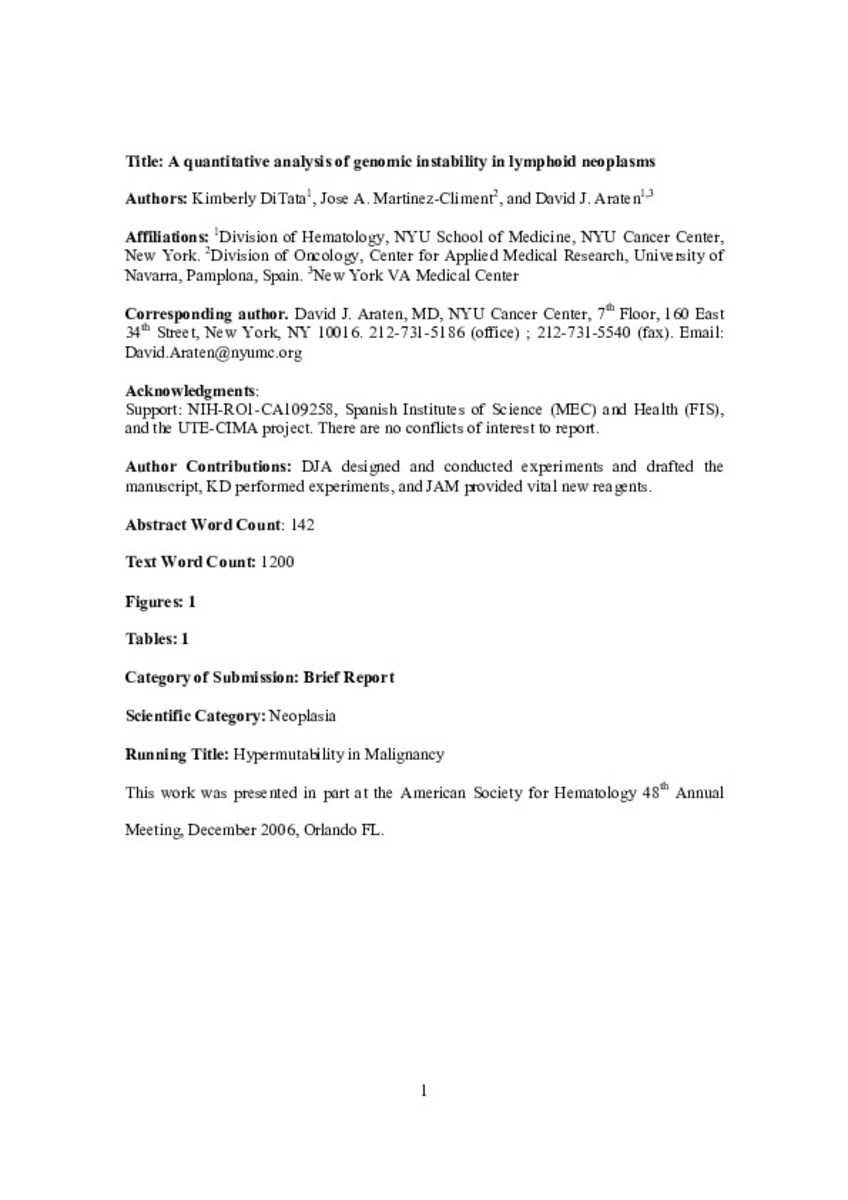A quantitative analysis of genomic instability in lymphoid and plasma cell neoplasms based on the PIG-A gene
Palabras clave :
Genomic instability
Hypermutability
Lymphoid neoplasms
Plasma cell neoplasms
PIG-A gene
GPI-linked proteins
Fecha de publicación :
2010
Cita:
Araten DJ, Martinez-Climent JA, Perle MA, Holm E, Zamechek L, DiTata K, et al. A quantitative analysis of genomic instability in lymphoid and plasma cell neoplasms based on the PIG-A gene. Mutat Res 2010 Apr 1;686(1-2):1-8.
Aparece en las colecciones:
Estadísticas e impacto
0 citas en

0 citas en

Los ítems de Dadun están protegidos por copyright, con todos los derechos reservados, a menos que se indique lo contrario.







